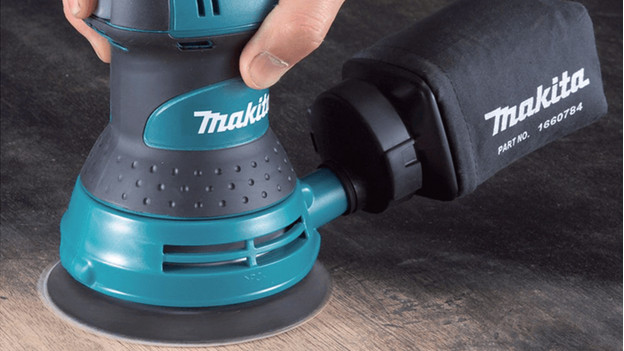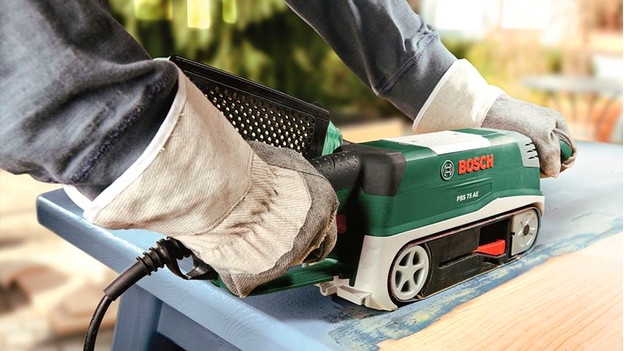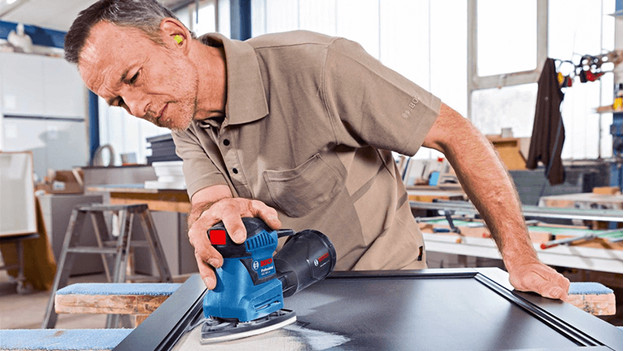
Advice on sanding parquet
Which sanders are suitable for sanding parquet?
You can only sand a floor the right way with the right sander. But which sander is the right one may differ greatly. You'd think any sander will do, as long as it has a piece of sandpaper attached. But you do want an even result, and it shouldn't take any longer than necessary. That's why the following 3 sanders are most suitable for this challenging job.
Eccentric sanders

An eccentric sander is easy to control. Thanks to its relatively large round sanding pad, it's suitable for large surfaces. The speed you sand a floor with is average. In the case of an eccentric sander, you do need an attention to detail. That's because the rotating movement you make should be the same everywhere, just like the pressure you use. Unfortunately, you can't reach corners with this type of machine. You'll need to sand them by hand or with another machine.
Belt sanders

This sander has a large, rectangular pad, with a sanding belt running over it at high speed. Because of the heavier weight pressing on the floor, you can sand a lot faster than with an eccentric sander. This does mean you can also damage it more easily. In order to prevent this, you should move in the same direction as the grain. You can reach the corners of the area a bit more easily, but you won't make the final few centimeters.
Detail sanders

It won't be very fast, but a delta sander is also suitable for sanding parquet. We mostly added this type to this list to ensure a nice finish. That's because a delta sander does allows you to sand the corners easily. And you can you can accurately sand along your baseboard or wall as well. Want to sand your entire wood flooring with a delta sander anyway? Thanks to its smaller sanding surface and relatively low weight, a delta sander is the safest choice when it comes to damage.
What should I pay attention to when sanding parquet?
Cover everything left in the room with film and check the floor for protruding nails. Hit the nails at least 2 to 3mm into the wood. Sanding parquet is a dusty job, so make sure you have dust extraction and work with a dust mask. Start with a coarse grain (K40) and don't apply too much pressure. After that, switch to finer sandpaper (K80/K100). When you're done, make sure the room is completely dust-free.


